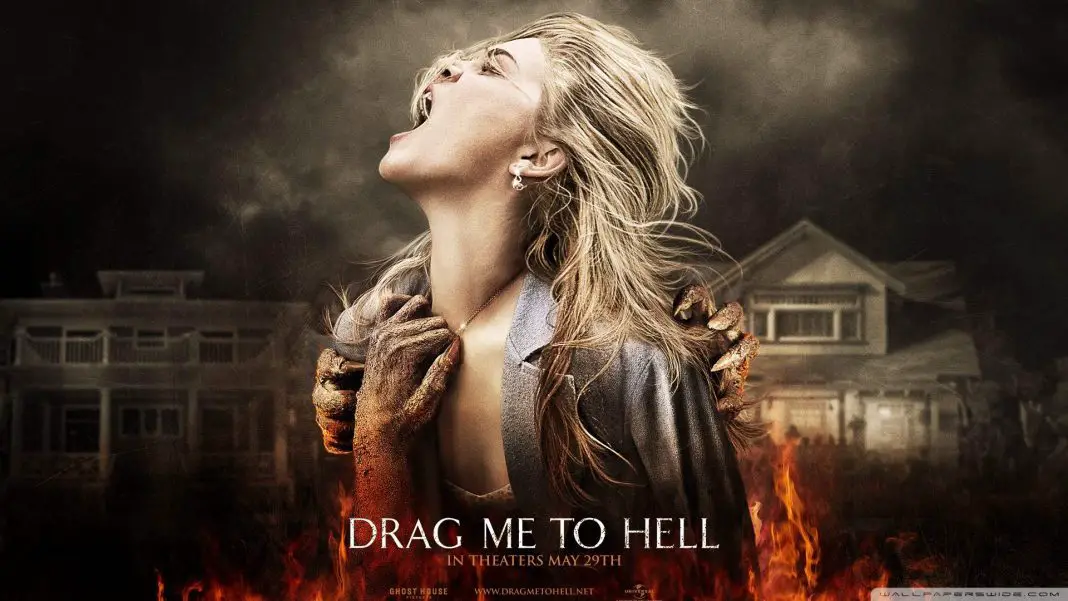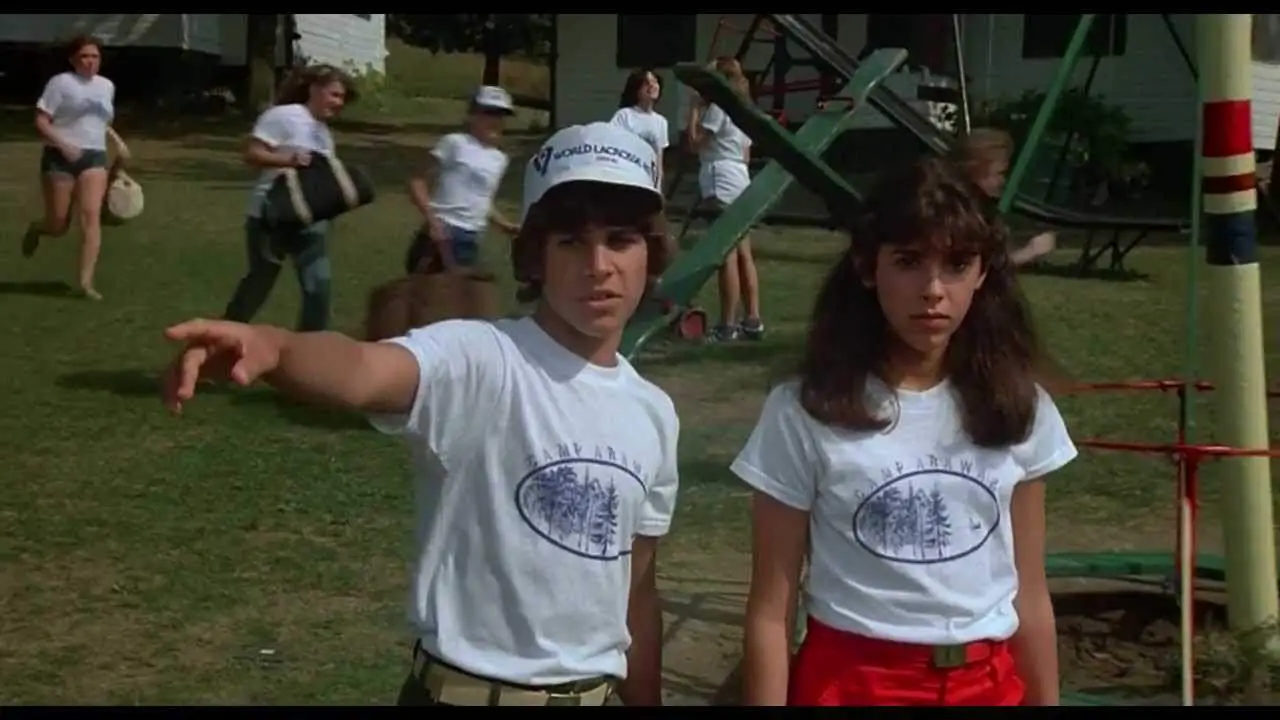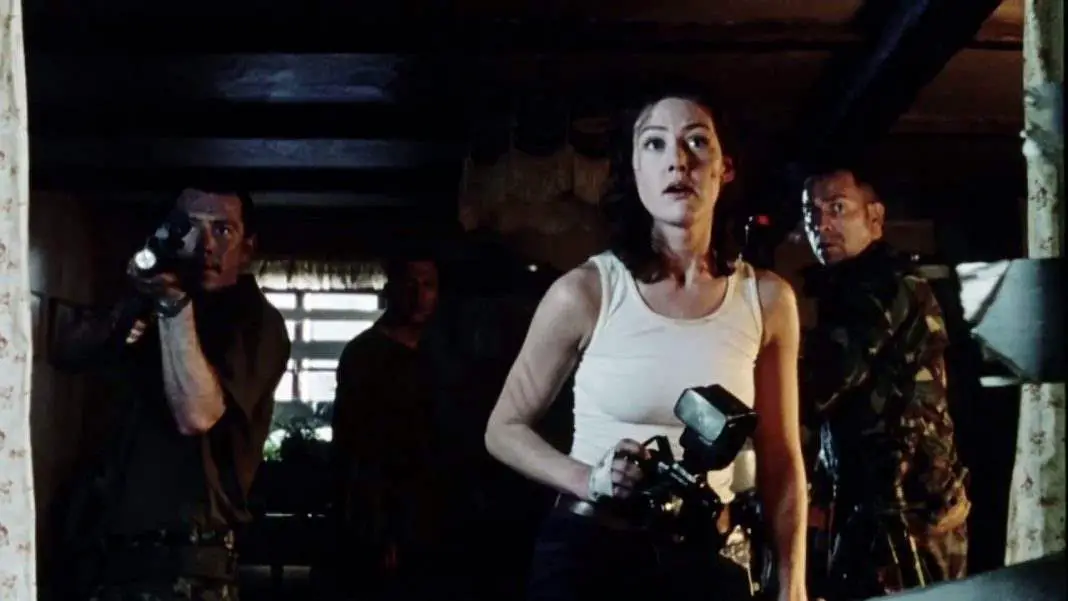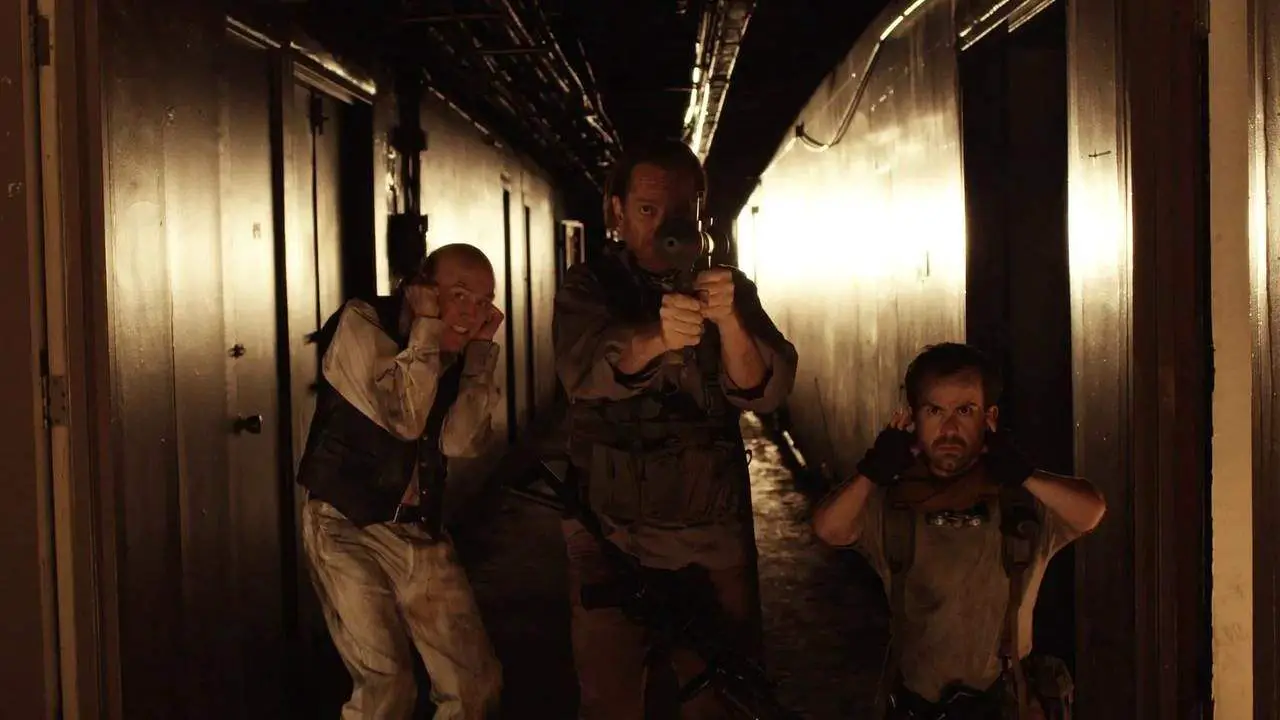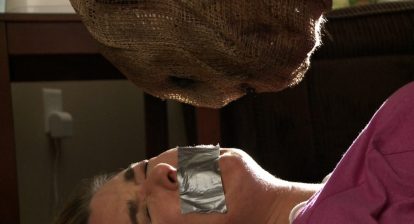Sam Raimi’s Drag Me to Hell is equal parts Evil Dead and Thinner. It’s a supernatural Romani revenge story told through Raimi’s signature style. It’s over-the-top and things go insane, just the way you’d expect it to happen in an Evil Dead movie. But even though the style is there, Drag Me to Hell is a completely different type of film. It’s almost a complete 180 from The Evil Dead. In Raimi’s original classic feature, the evil that assaults our heroes is uncovered accidentally. They were just in the wrong place at the wrong time. That’s what ultimately sets the two apart. In Drag Me to Hell, Christine is the active catalyst for all of the supernatural terror she is subjected to. She has it coming.
When we first meet her, she doesn’t seem like a bad person, and that’s the point. Most horror films, to their core, are about how people react in the strongest, most extreme situations. When those moments come, you find out what kind of person you really are. She starts out like any young woman trying to make it in the world. She’s ambitious, self-motivated, but these traits amplify as the movie goes on to the point that they wind up defining her. In general, these are tricky things to balance in life. As Drag Me to Hell eventually shows, it doesn’t take much for self-motivation to turn into total self-centeredness.

That breaking point is when Christine kills a harmless kitten. Raimi literally picked the cutest, most innocent animal that he possibly could in order to make this scene work and show how far the heroine had gone past the point of no return. This scene is the perfect embodiment of the fact that she will do anything to survive, it doesn’t matter who or what she screws over. In some contexts, this can be something admirable, but there’s a point where self sacrifice looks pretty good too. There’s also a dark irony to the fact that so much of what she’s suffering from is due to her unwillingness to admit she’d even screwed anyone over in the first place.
 It takes her a long time to admit that she’s done something wrong. And even when she does, it’s only because she’s tried everything else. She doesn’t believe a word she’s saying. As soon as it proves not to work, she just takes it back. She expects everyone to have sympathy for her as the movie goes on, but virtually the entire plot could have been avoided if she herself had sympathy in the first place. She doesn’t feel bad for this poor old woman or her family. She allows the woman to lose her home simply because she wants a promotion.
It takes her a long time to admit that she’s done something wrong. And even when she does, it’s only because she’s tried everything else. She doesn’t believe a word she’s saying. As soon as it proves not to work, she just takes it back. She expects everyone to have sympathy for her as the movie goes on, but virtually the entire plot could have been avoided if she herself had sympathy in the first place. She doesn’t feel bad for this poor old woman or her family. She allows the woman to lose her home simply because she wants a promotion.
And you know what? That part is almost forgivable. It’s terrible, but her boss was looking over her shoulder to see if she could make a tough call and she proved that she could. But she doesn’t feel bad about it, not in any way and that’s made expressly clear. And her inability to feel bad about the entire family she’s hurt only becomes clearer and clearer in more absurd ways as the movie goes on.
She doesn’t care when she finds out that the old woman died. She crashes the funeral, desecrates the body and all she can feel walking away from that is embarrassment. Even after that she still has the gall to ask a member of that family for help, which is unbelievable. She pretends to feel sorry, almost sounds sincere about it, but these are brief and fleeting moments. Every action she takes, both before she’s cursed and after, are driven by her own self-interest.
 This is all made abundantly clear when Christine digs up and continues to beat on the dead body of the woman who cursed her, the woman she failed to help, calling her “Bitch” and attempting to give the curse back. It’s absurd and over-the-top and that’s the whole point. This character is drained of all likability by this point and we’re just along for the ride. We’re just there to see what gets thrown at her next.
This is all made abundantly clear when Christine digs up and continues to beat on the dead body of the woman who cursed her, the woman she failed to help, calling her “Bitch” and attempting to give the curse back. It’s absurd and over-the-top and that’s the whole point. This character is drained of all likability by this point and we’re just along for the ride. We’re just there to see what gets thrown at her next.
That’s why I had no problems with the ending, the way many fans did. I think you should be allowed to kill your heroine at the end of a horror film. I think it’s one of the few tricks that audience members never see coming. But that’s not what happens at the end of Drag Me to Hell. It’s not the hero who’s dying, it’s the villain. The person who deserved sympathy was the old woman who got down on her needs and begged for help, who’s motivations were pointedly selfless as she was looking after her family’s future since she would be dying soon.
You don’t need to feel bad for the protagonist at the end of Drag Me to Hell. In fact, you probably shouldn’t, especially after her intense slaughter of a small kitten. Her desperation is somewhat admirable, but she’s just fighting the inevitable and continually proving how terrible she is as the action escalates, and I think that’s ultimately the point.
